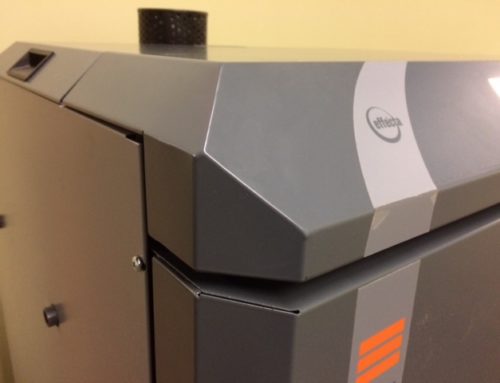Charlie Niebling has long been an advocate of biomass thermal in North America. In the Biomass Magazine article below, Charlie provides an interesting view of how government incentives affect the growth of biomass thermal in mixed ways. I’ll let the article speak for itself, and add a few thoughts of my own.
Looking at Incentives for Biomass Thermal – The All-or-Nothing “Hoop Dilemma”
Government incentives, at the behest of state governments or agencies, are usually large enough where suppliers and homeowners will try to jump through hoops to qualify. Continuing with the hoop metaphor, if a potential customer can’t fit through one of the hoops (due to distance to a bulk pellet supplier, for example), then that individual will not end up becoming part of the low-carbon solution the incentive is intended to promote. An alternative to the all-or-nothing approach would be to enable more choice. More choice means more paths available to collect an incentive of some kind. And more choice should also lead to more success for the incentive program.
It seems perfectly acceptable that incentives can be structured in a good, better, best way. That way, more people will be able to participate in some way. To paraphrase Voltaire’s now commonly accepted wisdom: “Do not let the perfect be the enemy of the good”. As it stands today, biomass thermal incentives are structured to achieve “best”, with nothing available for “good” or “better”.
If the primary goal of an incentive program is to incentivize low carbon heating, then more people being able to participate should be seen as a better result. For example, it shouldn’t matter so much if a low-carbon fuel is delivered on a pallet or via truck to a silo. The primary goal is met when that home is heated with a renewable fuel rather than a non-renewable alternative.
When Arbitrary Criteria are Used
Another hoop issue is created when some elements of an incentive program are based on arbitrary criteria, and that those criteria artificially and unfairly limit choice to only one or two suppliers. For example, if a product meets an efficiency standard, should it matter how the product reaches that standard? Equipment can meet efficiency standards using different boiler designs, control strategies, and components. Therefore, it doesn’t really make sense to add in those kinds of criteria into an incentive program. Stick with what matters; in this case, the efficiency threshold.
Along this same line of argument, it is a problem when a program is inadvertently set up so that only one supplier meets the program criteria. Competition suffers. I’ll call these “single supplier hoop errors”. Fortunately, this is a rare occurrence, but it should not happen ever. It’s bad enough if such an error slips through. It’s worse if the error is later identified and is not fixed. There should be some flexibility in programs to allow mid-stream adjustments and corrections to eliminate these anti-competitive errors.
Incentive Program “Templating”
Once a “hoop error” is made in one incentive program, it can end up in others as well, as there is a tendency to use established incentive programs as templates for new ones. Therefore it’s worthwhile to have opportunities for input from suppliers, customers and installers before a program rolls out, and again once the program has been up and running. Program organizers should be aware of the hoops they are setting up and perhaps survey people who have taken advantage of the program, as well as those who for whatever reason could not participate because of the hoops they could not jump through.
Collecting Incentive Program Feedback with an Online Form
A form on the incentive program website in which potential customers, suppliers, and installers can provide input, could be a worthwhile way to get feedback. Ideally, that form should allow input to be anonymous, as forcing people to go on record with a suggestion or complaint would turn some people away. As long as the input is constructive, it should be counted, and it shouldn’t necessarily matter who gives it.
Maximizing the Success of Incentive Programs
Incentive programs can play an important role in shifting residential and commercial buildings to a smaller carbon footprint. Prescribing an all-or-nothing approach is counter-productive. Indeed, partial steps are already built in to these programs, as it’s not required to remove fossil fuel boilers in order to qualify for the incentives. If more homeowners and businesses can take steps toward a low carbon future, by supporting alternative approaches (e.g. smaller pellet storage options, various equipment designs, etc.) then the programs will have broader appeal and perhaps wider adoption. Wider adoption has value for all stakeholders. As these programs help move people toward a low carbon future, the goals of these programs get closer to being met. Whether the incentive is in the form of grants or low interest financing, the end result can be equally positive.
Biomass Magazine article by Charlie Niebling follows here:
When Good Intentions Become Counterproductive






Leave A Comment